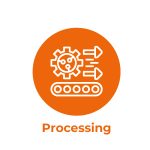Factory Processing
Application of antimicrobial agents at minimum inhibitory concentration values for optimal control of microbial isolates from Louisiana sugarcane factories
Last Updated: junio 11, 2025Gillian O Bruni and Evan Terrell USDA-ARS Southern Regional Research Center, 1100 Allen Toussaint Blvd, New Orleans, LA 70124, United States of...
Optimization of a direct method for quality evaluation in sugarcane and by-products in Tucumán, Argentina
Last Updated: junio 11, 2025Sugar mills in Tucumán, Argentina, continue using indirect methods to assess sugarcane quality for payment purposes. This study aimed to implement and optimize a more accessible and economical direct evaluation method.
Direct and indirect effects of climate change on sugar quality and storage stability: the case of the Brazilian 2024/25 season
Last Updated: junio 11, 2025In the 2024/2025 sugarcane season in Brazil faced extreme weather events, including droughts and heatwaves, which significantly impacted sugarcane yield and quality. While yield reductions due to climate variability are well-documented, their effects on sugar quality and storage remain underexplored.
Coffee husk as an alternative biofuel for bagasse-fired boilers
Last Updated: junio 11, 2025This study was developed due to the need to find an alternative fuel to supply the growing demand for steam in new processes of the Ingenio Risaralda mill. Coffee husk is obtained from the farms in the region where coffee is processed and arrives at the mill in trucks in loads of 10 t and is unloaded into the feed hoppers.
New insights on the identification of oligo/polysaccharides causing elongation of raw-sugar crystals
Last Updated: junio 11, 2025Crystal elongation is unwanted since it reduces crystallization rates and leads to higher molasses production with higher purities, centrifugation problems, and higher sucrose losses. Sucrose crystal elongation usually occurs because growth in certain directions is inhibited by an impurity rather than accelerated.
Novel methodology to quantify extraneous matter in shredded sugarcane using near-infrared spectroscopy
Last Updated: junio 11, 2025In many sugarcane-producing regions, payment systems often fail to account for extraneous matter (EM), such as leaves and soil, which are harvested along with the sugarcane stalks. This oversight fails to incentivize growers to deliver higher-quality cane and negatively impacts factory efficiency.
Optimized application of dextranase at low doses and retention times to hydrolyse dextran in sugarcane juice
Last Updated: junio 11, 2025Dextranase (endo 1→6-a-glucan hydrolase) enzyme is applied in sugarcane factories to hydrolyse dextran (a-1→6-D-glucan) into smaller, more manageable molecules, which can improve crystallization rates, reduce crystal elongation problems, and prevent dextran penalties in the raw sugar.
The road to Sugar Factory 4.0
Last Updated: junio 11, 2025The Sugar Milling Research Institute NPC (SMRI) has embarked on a suite of projects aimed at providing operating staff with relevant and useful information generated from already available data supplemented by data generated from newly developed instruments using the principles of Fourth Industrial Revolution technologies.
Applications of machine learning to estimate economic impacts of starch and dextran on sugar manufacturing
Last Updated: junio 11, 2025Polysaccharide contamination (e.g., starch, dextran) is among the leading causes of decreased sucrose yields from sugarcane processing. Although there is a wide body of literature on management and mitigation strategies, there is little quantification of the associated economic impact of polysaccharides relating to recoverable sucrose losses.
Microbial control from concurrent application of enzymes and antimicrobial agents on sugarcane processing bacteria and exopolysaccharides
Last Updated: junio 11, 2025A persistent issue faced during raw sugar manufacturing is the presence of microbial contaminants such as bacteria (e.g., Leuconostoc spp.) and their associated exopolysaccharides (EPS). Many of these microorganisms consume sucrose directly, decreasing product value, while also generating EPS that may elevate viscosities and introduce operational challenges and associated costs.
